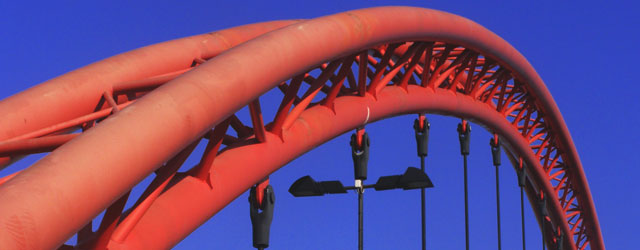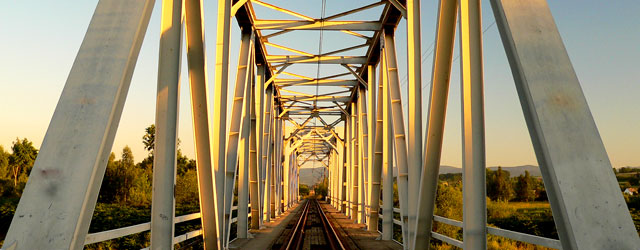A new prediction has been recently made for the remaining life of the Auckland Harbour Bridge. Assessments for the life of steel bridges like the harbour bridge that can be maintained indefinitley against corrosion damage tend to focus on the fatigue life of critical structural components. Huge capital investment and planning decisions can rest on the reliability of such predictions.
So how reliable are fatigue assessments of steel bridges?
If the assessment is based on generic S-N curves, otherwise known as Wohler curves, such as those published in steel strucures standards like NZS 3404:1997, then the prediction will be unreliable. Why?
S-N curves are a plot of fatigue tests of a specific structural component that has been cyclically loaded to failure at constant stress ranges. Wohler discovered in the 19th century that the number of cycles of loading that a component could resist reduced as the stress range level increased. So log-log plots could be developed for that component to describe the variation of its life when subjected to constant stress range loading of different magnitudes.
The curves don’t apply directly to variable amplitude loading. The Palmegren-Miner summation is often used to try to average the effects of different stress ranges using S-N curves. However even with component specific S-N curves the results aren’t reliable in terms of fatigue life prediction. In terms of comparative fatigue life between one set of loading and another the method at least allows a consistent approach. However the fundamental problems with using generic S-N curves for variable amplitude loading are as follows:
1. How thick or otherwise geometrically similar were the test pieces used in developing the curves when compared to the component being assessed?
2. What was the size of the crack initiator, or the surface condition of the test specimens compared to the component being assessed?
3. What was the criteria for failure for the test specimens compared to that acceptable for the component being assessed? For example was it first visible signs of a surface crack, crack development through the full thickness of the plate, or growth of the crack to a level of reduced component strength?
4. What was the stress range ratio used to develop the curves compared to the in-service loading? Was it fully reversed or tension to tension loading?
5. As a crack grows, its sensitivity to stress range increases, meaning that even stresses below the nominal endurance limit indicated by S-N curves can result in crack growth. This is not accommodated in a Palmegran-Miner summation.
There are other factors as well to add to these issues.
The level of unreliability that can occur is illustrated in an assessment using generic NZS 3404:1997 S-N curves and Palmegren Miner summation by Bayley in HERA Report R8-22 . This was of a sign post that failed under wind induced fatige loading after 2 years, however the predicted fatigue life using that method was 23 years! Ten times longer than what actually had occurred.
So how can the fatigue life of a structure be better assessed? The answer is by the use of fracture mechanics based fatigue assessment, utilising appropriate crack growth models. A much more reliable assessment of how long a bridge or other fatigue critical structure will last can be made.
If you would like to know more about fatigue assessment of structures using fracture mechanics based approaches contact us.




